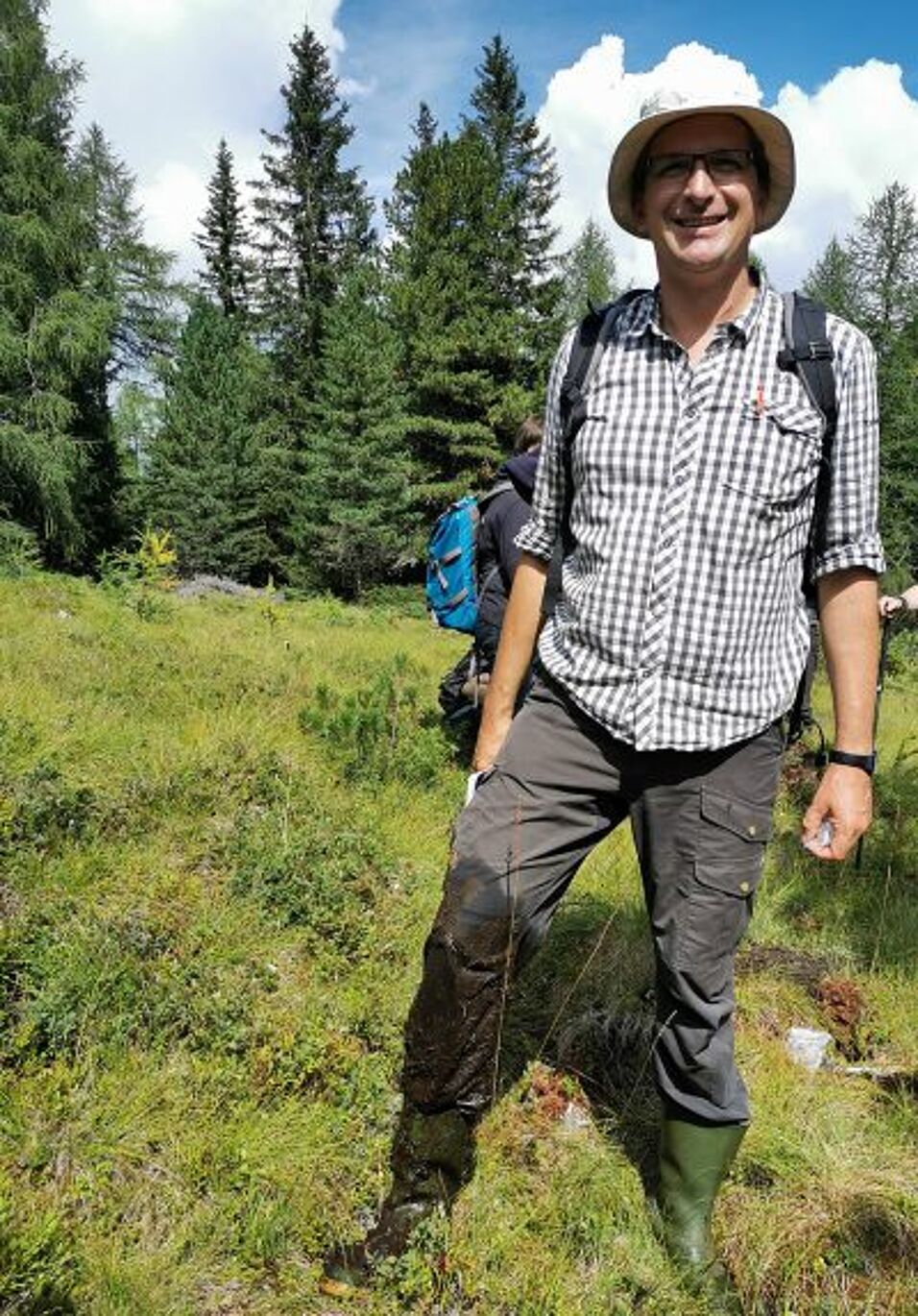Peatlands are important carbon sinks - but if they are drained and used as cultivation areas, they can turn into a considerable source of greenhouse gases: in the EU, for example, wetlands used for agricultural purposes are responsible for 25 percent of all agricultural greenhouse gas emissions, although they only account for around 2.5 percent of all agricultural land.
The FWF project PRINCESS (Peatland Rewetting In Nitrogen-Contaminated Environments) is investigating ways to reduce these greenhouse gas (GHG) emissions. "In particular, we are looking at the effect of rewetting - in other words, how do emissions change when the water table in previously drained wetlands is restored or increased to near or above the soil surface" explains Stephan Glatzel, head of the PRINCESS project and the Geoecology group at the Department of Geography and Regional Research at the University of Vienna.
Methane as potent Greenhouse gas
The underlying processes are complex: although carbon dioxide and nitrous oxide emissions (CO2 and N2O) usually decrease with increasing water table levels, the emission of methane (CH4), an even more potent greenhouse gas potentially increases, particularly under the condition of high nitrogen levels in soils. "Therefore within the project we are also investigating how to reduce nitrogen levels," explains Kyle Boodoo, project staff at PRINCESS.
At the same time, the aim is to maintain the productivity of wetlands used for agriculture or forestry, the so-called paludiculture, as far as possible, because this also directly affects the income opportunities of those who own and use these areas and live from their yield.
"We are therefore investigating ways to reduce greenhouse gases and nitrogen levels and at the same time preserve the livelihoods of those working in paludiculture," says Boodoo. To investigate those different tasks, the FWF project brings together a diverse team of EU-scientists, including the Universities of Greifswald, Antwerp and Warsaw, as well as the Norwegian Institute for Bioeconomics (NIBIO) and the Finnish Luonnonvarakeskus (LUKE).
The Geoecology group at the University of Vienna is responsible for the precise determination and modeling of greenhouse gas emissions: In Germany, the Netherlands and Poland, greenhouse gas emissions will be measured both in natural wetlands and paludiculture sites using large flux chambers placed over the sedges/reeds in the peatland, directly measuring the emissions of GHGs to the atmosphere.
Fingerprint of greenhouse gases
The team from the University of Vienna will also use isotopic tracing methods to help determine the exact sources of the greenhouse gases. Isotopic measurement methods, which are also used in archaeology or the geosciences, can be used to identify the source of CO2 or methane (CH4) emissions: "We are kind of taking a carbon fingerprint, because carbon derived from different sources or processes exhibits distinct ratios of carbon isotopes, allowing us to trace the exact source”, explains Glatzel. This makes it possible to identify which processes play the most important role in terms of the production and emission of greenhouse gases, under different water table levels, nitrogen content and climatic (eg. temperature, humidity) conditions.
"On this basis, we are able to develop sound recommendations for the management of paludicultures and wetlands in order to significantly reduce greenhouse gas emissions from peatlands and help achieve the European community long-term vision for a climate neutral economy by 2050," says Glatzel.
About the project
- Project title: PRINCESS (Peatland Rewetting In Nitrogen-Contaminated Environments)
- Duration: Since 01.01.2021 for three years
- Project Partners: Uni. Vienna, Austria (S. Glatzel, K. Boodoo); Uni. Greifswald, Germany; Uni. Antwerp, Belgium; Uni. Warsaw, Poland; Norwegian Institute of Bioeconomy Research (NIBIO), Norway; Luonnonvarakeskus (LUKE), Finland
- Funded by: FWF (BiodivClim ERA-NET COFUND Action on Biodiversity and Climate Change)




